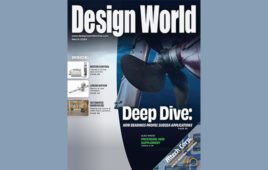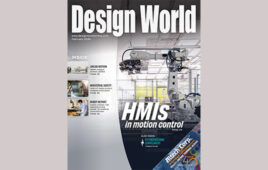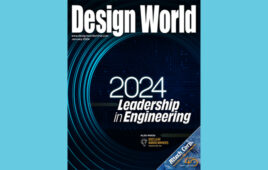Consumer products can be technology ambassadors
I THINK AND WRITE ABOUT electric motors (and designs based on motors) every single day of my life. That’s why it’s a special satisfaction for me that after years of mediocrity, robot vacuums — those little bundles of motor arrays designed to reduce drudgery — are finally worth their purchase price.
My interest in robot vacuums began years ago and intensified upon losing a Roomba I7 to my esteemed colleague (and lucky dog) Dan Kara of Design World sister publication therobotreport.com at recent company-meeting raffle. In the fit of exasperated yen that followed, I did some research and ponied up for a Neato Botvac D7.
My little D7 vacuum is devastatingly smart and powerful. A brushless dc motor made by Delta Electronics is at the core of its vacuum blower. A slightly customized 6-Vdc 2,100 rpm brushed dc gearmotor from (in many cases) Nichibo Taiwan drives a LiDAR turret for location. A Chengfang 12-Vdc motor via a tiny toothed belt drives the beater-brush cylinder; two wheels to propel and pivot the D7 rely on twin encoder-fitted motors with transmission via elegant gear assemblies all integrated around load-bearing axles. A final 6-Vdc motor twirls a side brush (via a miniature shaft-mounted pulley to accommodate a round belt that’s essentially a fancified O-ring) to flick debris into the robot’s suction path. All these motor-driven elements are complemented by bump and cliff and bin sensors and switches as well as certifiably IoT control electronics that allow smartphone configuration and cleaning plans and scheduling.
Of course, all the wonderment that I and other engineers feel from such elegant designs is matched by the trepidation many others feel about technology — especially when such designs threaten to eliminate people’s current jobs. Surely there are some folks out there working as domestic cleaners who are far less enthusiastic about Roombas and Botvacs than me.
At an automation event earlier this year, futurist Byron Reese outlined more optimistic perspectives. Certainly, the doomsday messaging of media coverage on robotics and advanced automation “taking jobs” doesn’t help assuage suspicion. But Reese argues that we should no more fear robots and AI than our ancestors should have feared electricity and assembly lines and mechanization. It’s true that in the short term, such developments greatly disrupt the structure of workplaces (and cause industries to rise and die) but ultimately innovation empowers workers to do higher-level jobs — and doesn’t replace them.
We cover one example of this in our 2020 Trends article on the rise of automation in fast-food chains. The quick-service restaurant (QSR) industry currently faces not a lack of jobs to offer but rather a shortage of potential workers to employ.
Reese explains that every fifty years for the last few centuries, half of all jobs have been eliminated by innovation — and yet unemployment has never exceeded 10% or so. That’s taken us from a time when 90% of all people descended from farmers and worked as farmers to today, when millions of people work as “lab techs, marketing directors, and ice sculptors” and in other positions nonfarmers of yesteryear would have considered ludicrous for those of agronomist ilk.
Buy-in from the general populous would certainly increase with more exposure to and direct engagement with automation and robotics — in the form of cutting-edge consumer goods that are affordable; approachable and relevant vocational programs; inspiring outreach and education for young students; access to automated facilities on a local level; and above all else, feasible paths to gainful employment that provides stability and personal meaning in hightechnology fields. As Henry Ford knew so long ago, those who work in factories and the trades must be able to afford purchasing the spoils of new technology if the business is to work — and if those workers are to embrace the idea of technological advancement being a good thing. That’s as true for robotic vacuums and Teslas today as it was for Model T cars … because after all, probably little feels worse than being disenfranchised by the gizmos and systems others celebrate.
Innovation and its innumerable benefits have never been problems for humankind … rather, effective communication and the equitable sharing of technology’s yields continue to be humanity’s main challenges.
Lisa Eitel
Filed Under: DIGITAL ISSUES • DESIGN WORLD




